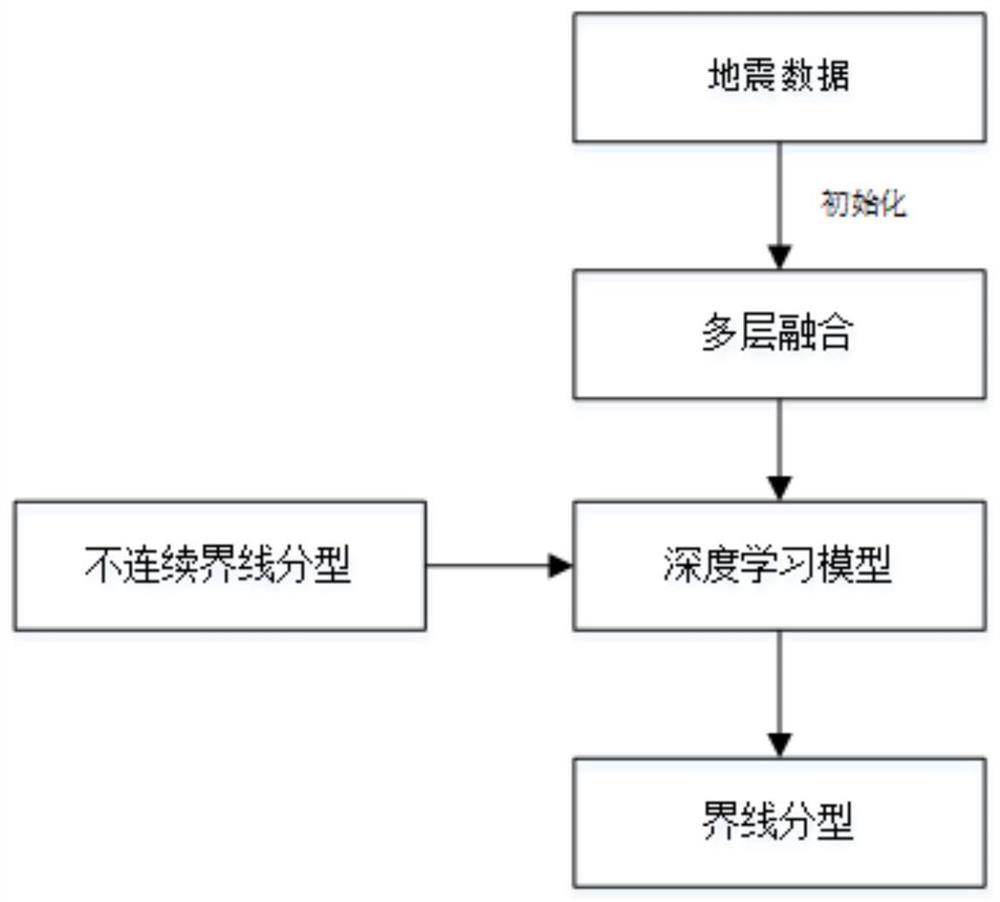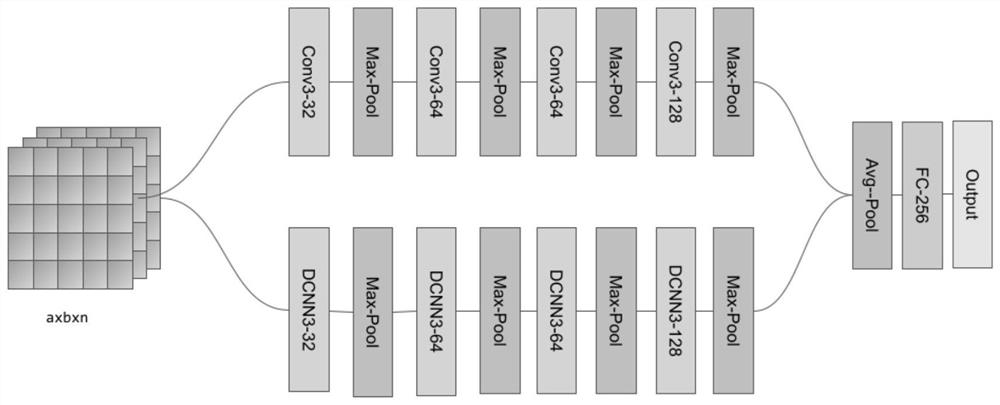Reservoir discontinuous boundary identification method based on expansion convolutional neural network
A technology of convolutional neural network and recognition method, which is applied in the field of recognition of discontinuous boundaries in reservoirs, can solve problems such as over-segmentation of images, and achieve the effects of reducing interference, improving resolution, and reducing recognition errors.
- Summary
- Abstract
- Description
- Claims
- Application Information
AI Technical Summary
Problems solved by technology
Method used
Image
Examples
Embodiment Construction
[0066] In order to make the object, technical solution and advantages of the present invention clearer, the present invention will be further described in detail below with reference to the accompanying drawings and examples.
[0067] like figure 1 As shown, a reservoir discontinuity boundary identification method based on dilated convolutional neural network, including the following steps:
[0068] S1: Obtain attribute map X from seismic data, X∈R a×b×c ;
[0069] The specific method of the step S1 is: obtain the attribute map X from the seismic data, X∈R a×b×c , where a is the width of the seismic image, b is the height of the seismic image, and c is the number of attributes; randomly initialize an n-dimensional vector for each attribute map to obtain the attribute image tensor X:
[0070]
[0071] S2: Use multi-layer fusion technology to map the fused attribute data to a low-dimensional vector space;
[0072] The specific method of the step S2 is: adopt multi-layer f...
PUM
 Login to View More
Login to View More Abstract
Description
Claims
Application Information
 Login to View More
Login to View More - R&D
- Intellectual Property
- Life Sciences
- Materials
- Tech Scout
- Unparalleled Data Quality
- Higher Quality Content
- 60% Fewer Hallucinations
Browse by: Latest US Patents, China's latest patents, Technical Efficacy Thesaurus, Application Domain, Technology Topic, Popular Technical Reports.
© 2025 PatSnap. All rights reserved.Legal|Privacy policy|Modern Slavery Act Transparency Statement|Sitemap|About US| Contact US: help@patsnap.com



